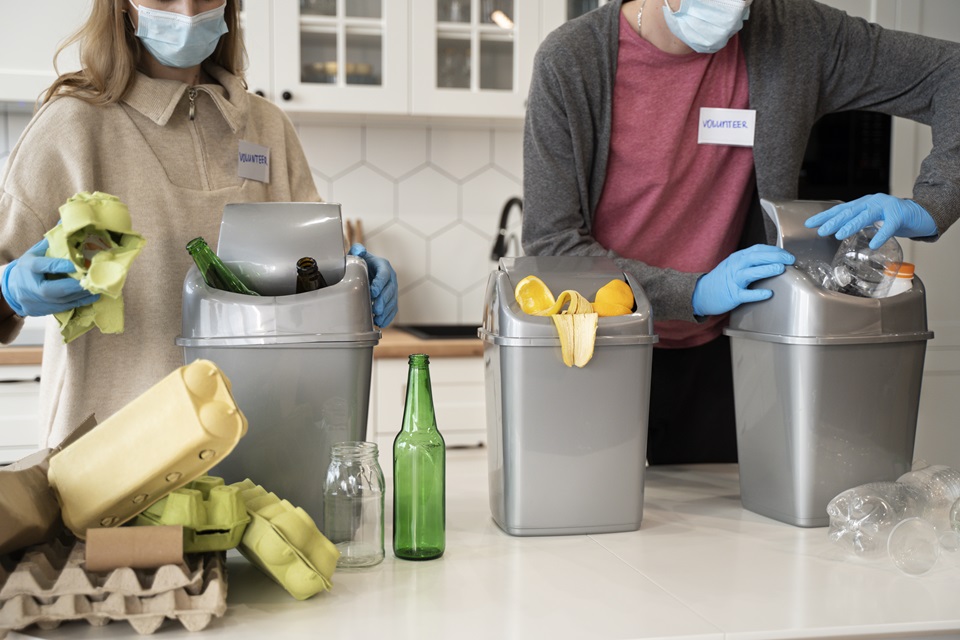In the modern era, where the planet’s sustainability has become a pressing concern, how people manage and dispose of household items plays a significant role in their environmental footprint. The accumulation of waste, particularly non-biodegradable waste, has far-reaching implications on ecosystems, wildlife, and human health. Consequently, adopting responsible disposal practices is not just a personal responsibility but a collective one toward improving the environment.
Read on to learn how to dispose of household items responsibly.
Table of Contents
The Mattress Dilemma: Sustainable Disposal
One of the more cumbersome items in any household is the mattress. Given its size and composition, disposing of a mattress can be daunting. However, there are easy ways to dispose of a mattress that alleviate the physical burden and contribute positively to environmental conservation. These methods include recycling programs and donation centers, and sometimes, if in good condition, repurposing them for other uses. The choice of method should align with the most sustainable practices, ensuring the most negligible environmental impact.
Electronics: E-Waste Recycling
The rapid pace of technological advancement has led to a significant increase in electronic waste, or e-waste. From smartphones to refrigerators, the lifecycle of these products often ends in landfills, releasing toxic substances into the environment.
To counter this, many communities offer e-waste recycling programs. These programs ensure that valuable materials like copper, gold, and aluminum are recovered, while harmful substances are properly managed. Before disposing of electronics, consumers should remove personal data and check with local waste management services for e-waste recycling guidelines.
Clothing & Textiles: Donation & Upcycling
The fast fashion phenomenon has escalated clothing production and disposal rates, making the textile industry a significant waste generator. Annually, millions of tons of apparel are discarded, contributing to landfill overflow. To mitigate this, donating gently used clothing to charitable organizations is a sustainable alternative, extending the life cycle of garments and supporting those in need.
Upcycling presents another eco-friendly solution, transforming outdated or worn textiles into new, functional items such as cleaning cloths, decorative quilts, or unique art pieces. This creative repurposing conserves resources by reducing the demand for new materials and curtails waste, embodying a circular economy ethos.
Kitchen Waste: Composting
Kitchen waste, mainly food scraps and organic matter, constitutes a substantial portion of household refuse. Traditional disposal methods often lead to this biodegradable waste occupying landfill space, decomposing anaerobically, releasing methane, a potent greenhouse gas. Composting offers a viable solution, converting organic waste into valuable compost, a natural soil amendment rich in nutrients.
By establishing a compost bin at home, residents can significantly diminish their waste output and contribute positively to soil health. This practice averts waste from landfills and enhances soil fertility, promoting the growth of robust, healthy plants devoid of synthetic fertilizers.
Hazardous Household Waste: Specialized Disposal Programs
Hazardous household waste, encompassing items like paints, batteries, chemical cleaners, and pesticides, poses significant environmental and health risks if improperly discarded. These substances can contaminate soil and water sources, threatening ecosystems and human well-being. Recognizing these hazards, many local governments have instituted specialized disposal programs tailored to process such hazardous materials safely. These programs aim to treat, neutralize, or recycle hazardous waste, minimizing its environmental impact.
Participation in these programs is crucial for responsible waste management, and individuals are urged to familiarize themselves with local disposal guidelines to ensure their hazardous waste is handled appropriately. This proactive approach to hazardous waste management underscores the importance of community engagement in safeguarding the environment against potential pollutants.
Furniture & Large Appliances: Donation & Recycling Services
Large items such as furniture and appliances pose significant challenges in disposal due to their size and material composition. Before deciding to dispose of these items, consider donation options. Many charitable organizations accept furniture and appliances in good condition. For items beyond repair, look for recycling services that can dismantle these goods to recover materials, thus reducing the environmental impact associated with raw material extraction and processing.
Plastic Waste: Reduction & Recycling
Plastic waste is one of the most persistent environmental issues, with vast amounts ending in oceans and waterways. The best approach to managing plastic waste is to reduce its use in the first place. Opt for reusable bags, bottles, and containers whenever possible. Proper recycling is crucial for unavoidable plastic waste. Familiarize yourself with local recycling guidelines, as different plastics require different handling.
Takeaway
The path to sustainable living involves a conscious effort in every aspect of life, including how people dispose of household items. People can significantly reduce their environmental footprint by adopting responsible disposal practices, such as recycling, donating, and upcycling. Each small action contributes to a more considerable collective effort towards a more sustainable future. Embracing these practices aids in waste management and fosters a culture of environmental responsibility that can inspire others to follow suit.



